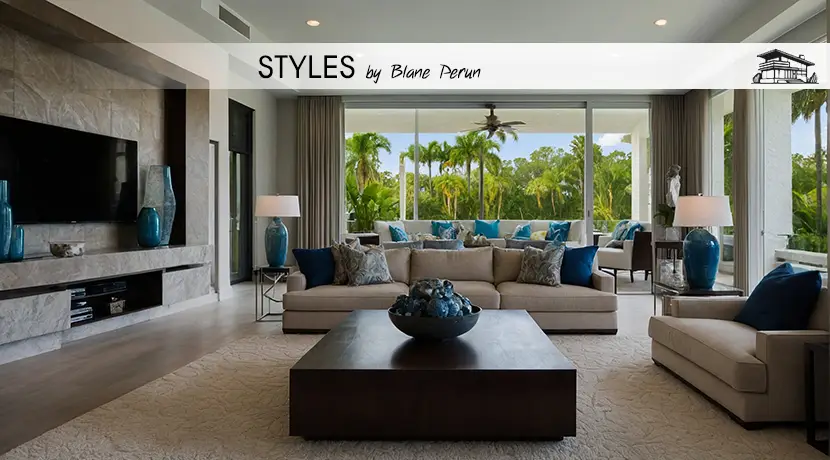Modern Interior Design
The Essence of Space: Unveiling the Charms of Modern Interior Design
In the realm of aesthetics and functionality, Modern Interior Design stands as a beacon of innovation, blending sleek lines with minimalist principles to create spaces that resonate with tranquility and purpose. This design philosophy, rooted in the early to mid-20th century, emphasizes a clutter-free environment where every element serves a purpose, fostering an ambiance of simplicity and elegance. As we delve into the intricacies of this design style, we’ll explore how it transcends mere fashion to become a way of life, inviting harmony and balance into our daily routines.

The Pillars of Modern Design
Minimalism: The Core of Modern Aesthetics
At the heart of Modern Interior Design lies the principle of ‘less is more’. This minimalist approach is not just about reducing clutter but about elevating the essence of each piece. Furniture with clean lines, a neutral color palette, and functional design not only serves a practical purpose but also acts as a statement of sophistication. Incorporating materials like steel, glass, and concrete, modern design pays homage to industrial progress while ensuring the space remains airy and light-filled.
Open Space: Redefining Living Areas
The concept of open-plan living is a hallmark of modern design, fostering a seamless flow between different areas of the home. This architectural choice not only enhances the sense of spaciousness but also encourages social interaction and connectivity within the living space. By dissolving the traditional barriers between kitchen, dining, and living areas, modern design creates a versatile environment that adapts to the dynamic nature of contemporary life.
The Texture and Color Palette of Modernity
Embracing Natural Elements
Incorporating natural materials like wood, leather, and stone into Modern Interior Design introduces warmth and texture, contrasting the sleekness of metal and glass. This juxtaposition of materials creates a layered, inviting space that feels grounded and connected to the natural world. The use of organic elements also underscores the design’s commitment to sustainability, a pressing concern in today’s architectural practices.
The Harmony of Neutrals
The color scheme in modern interiors often leans towards neutral tones, providing a calm and understated backdrop that allows architectural features and key furnishings to stand out. Accents of bolder colors are used sparingly, adding depth and interest without overwhelming the senses. This strategic use of color enhances the visual appeal of the space while maintaining a serene and cohesive atmosphere.
Lighting and Accessorizing: The Finishing Touches
Innovative Lighting Solutions
Lighting plays a pivotal role in Modern Interior Design, with an emphasis on natural light to create an open and airy feel. Large windows, skylights, and strategically placed mirrors amplify daylight, while modern fixtures offer targeted illumination, blending functionality with artistic expression. The use of LED lights and smart lighting systems further reflects the design’s alignment with technological advancements and environmental consciousness.
Accessorizing with Purpose
In modern interiors, accessories are chosen with care, ensuring that each piece contributes to the room’s overall aesthetic and function. Artwork, rugs, and decorative objects are selected for their ability to complement the space’s minimalist vibe, adding personality without clutter. This thoughtful approach to accessorizing underscores the design’s philosophy of intentional living, where beauty and utility coexist in harmony.
In the journey through the principles and practices of Modern Interior Design, it becomes evident that this style is more than a trend; it’s a reflection of the evolving human experience. By marrying form and function, modern design invites us to reimagine our living spaces as sanctuaries of peace and creativity, where every element is imbued with intention and meaning.

Frequently Asked Questions
What defines Modern Interior Design?
Modern Interior Design is characterized by its emphasis on simplicity, clean lines, and a monochromatic color palette, complemented by occasional bursts of color. It prioritizes functionality and reduces clutter, incorporating open spaces and natural light to create a sense of openness and tranquility.
How can I incorporate Modern Interior Design into my home?
To embrace Modern Interior Design, start by decluttering and adopting a minimalist approach. Opt for furniture with simple, sleek lines and neutral colors. Emphasize open spaces and natural light, and use a few well-chosen accessories or artworks to add personality without overcrowding the space.
What materials are commonly used in Modern Interior Design?
Modern Interior Design frequently utilizes materials like steel, glass, and concrete for their sleek and industrial look, alongside natural materials such as wood, leather, and stone to add warmth and texture. These materials reflect the style’s roots in functionality and industrial advancement.
Can Modern Interior Design be warm and inviting?
Absolutely. Despite its minimalist approach, Modern Interior Design can be warm and inviting through the strategic use of textures, natural materials, and lighting. Incorporating elements like soft rugs, wooden accents, and ambient lighting can create a cozy atmosphere within a modern aesthetic.
How does Modern Interior Design differ from Contemporary Design?
While the terms are often used interchangeably, Modern Interior Design specifically refers to the design movement that began in the early 20th century and features specific stylistic elements such as minimalism and the use of industrial materials. Contemporary Design, on the other hand, refers to the design trends of the current moment, which can include a broader range of styles and influences.





